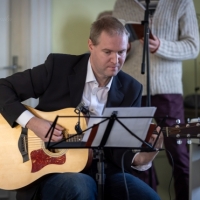DjangoBooks.com
Welcome to our Community!
Categories
- 20K All Categories
- 1.1K General
- 478 Welcome
- 59 Archtop Eddy's Corner
- 146 CD, DVD, and Concert Reviews
- 385 FAQ
- 26 Gypsy Jazz Italia
- 27 Photos
- 206 Gypsy Picking
- 21 Unaccompanied Django
- 15 Pearl Django Play-Along Vol.1
- 17 Gypsy Fire
- 45 Gypsy Rhythm
- 1.4K Gypsy Jazz University - Get Educated
- 131 Gypsy Jazz 101
- 228 Repertoire
- 223 History
- 708 Technique
- 51 Licks and Patterns
- 6 Daniel Givone Manouche Guitare Method Users Group
- 20 Eddie Lang Club
- 1.3K Gypsy Jazz Gear
- 804 Guitars, Strings, Picks, Amps, Pickups and Other Accessories
- 461 Classifieds
- 49 Recording
- 62 Other Instruments
- 18 Violin
- 5 Mandolin
- 22 Accordion
- 7 Bass
- 10 Woodwinds
- 348 Gypsy Jazz Events
- 143 North America
- 110 Europe
- 95 International












Comments
I've only been working on really studying rhythm for two weeks, and I have no one to really show me, so I guess that explains it. Anymore comments would be greatly appreciated. I'm trying to follow dennis' advice as best I can, but as we all know, it's hard to give and follow advice over the internet.
Thanks for the help so far.
With these videos I tried starting slow to get into the pendulum feel, so there are some miss-hits.. I guess just pay attention to the part where I speed up.
Video 1
Video 2: Me trying to copy the rhythm track from Stephane Wrembel's "Getting into Gypsy Jazz" (emphasis on trying)
Edit: Links fixed, thanks Vic
where the upstroke and the downstroke immediately followed are viewed as continual?
depending on the number of strings you lightly catch on the upstroke, mabye a "tied arpeggio" would even be appropriate...
I just picked up "Swing Guitar Essentials" (Scott Nygaard, editor. 1999) the other day.
Jorgenson has a lesson on Django Jazz. The entire discussion of La Pompe (which isn't even labeled as such) goes like this:
"STRUMMING
In a band context, the bass is going to be playing strong on beats 1 and 3, so the guitar needs to accent the 2 and 4 to make it swing. Play a percussive ghost strum on the bass strings on beats 1 and 3 followed by a strong, full strum on beats 2 and 4. You can also throw in a quick upstroke on the upbeats after the accented 2 and 4 (1, 2 and 3,4 and)."
--John Jorgenson
I know he only had a few pages to cover an entire tradition, but it still makes me laugh in light of the level of scrutiny la pompe is now getting.
***
One other interesting tidbit from a recent book purchase. This is Ivor Mairants' recollections of his encounters with Django.
He is writing in 1994 (still the scholarly dark ages for Django materials), and most of the passage is actually him quoting his memoir 'My 50 Fretting Years' (publication date unknown to me):
"....my personal interest was directed more toward Django than to Grapelli, who was billed as the leader, because I considered Django the greater inventive and innovative genius of the two. Nevertheless, I tried to base my personal style on the American jazz wizzards that I've so far mentioned [Lonnie Johnson, Eddie Lang, Dick McDonough, Carl Kress, and Teddy Bunn]....
"Whenever I could, I sat in the dressing room between shows watching Django wield his hard pick on his Maccaferri guitar. He used downstrokes, except in tremolo passages, and hit the strings very near the bridge, not resting his fingers but working from the wrist and elbow....
"His music fascinated me -- he never played a wrong note -- but his gypsy [sic] style did not draw me sufficiently to desire to imitate his improvisations in the way, say, Teddy Bunn's solos did..."
Ivor Mairants, "The Great Jazz Guitarists" (1994; republished 2002)
In general, Ivor is quite interesting writing on all these early jazz players, many of whom were actually younger than he was, and many of whom he knew at least as acquaintances.
He outlived 'em all, and was writing on everyone from Eddie Lang to Allan Holdsworth in this survey of jazz guitar.
Ivor does, however, lay this egg:
"It must be admitted that [Oscar] Aleman played rhythmically and with confidence but that the jazz content of his music was very muddled."
But he redeems himself a little later, calling the second chorus of Aleman's 'Whispering' solo "another jazz chorus that is even more weird and wonderful."
Get this book if you like the 1930's L-5 guitar mafia. It's mostly transcriptions, with 1-2 page historical introductions for each player. The 2002 edition splits the work into 2 volumes; I'm quoting from volume 1.
cheers
www.denischang.com
www.dc-musicschool.com
I'm crap at it.
That is all.
a wealth of info.
19200000000
≿≈ℭ